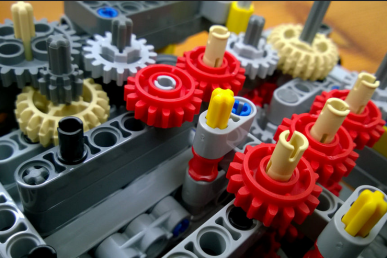This guide will help you get started with building a development environment for you to build and run a single node Kubernetes cluster with the OpenStack Cloud Provider enabled.
Contents
Prerequisites
To get started, you will need to set up your development environment.
OpenStack Cloud
You will need access to an OpenStack cloud, either public or private. You can sign up for a public OpenStack Cloud through the OpenStack Passport program, or you can install a small private development cloud with DevStack or Getting Started With OpenStack.
Once you have obtained access to an OpenStack cloud, you will need to start a development VM. The rest of this guide assumes a CentOS 7 cloud image, but should be easily transferrable to whatever development environment you prefer. You will need to have your cloud credentials loaded into your environment. For example, I use this openrc file:
export OS_PROJECT_DOMAIN_NAME=Default
export OS_USER_DOMAIN_NAME=Default
export OS_DOMAIN_ID=<domain_id_that_matches_name>
export OS_PROJECT_NAME=<project_name>
export OS_TENANT_NAME=<project_name>
export OS_TENANT_ID=<project_id_that_matches_name>
export OS_USERNAME=<username>
export OS_PASSWORD=<password>
export OS_AUTH_URL=http://<openstack_keystone_endpoint>/v3
export OS_INTERFACE=public
export OS_IDENTITY_API_VERSION=3
export OS_REGION_NAME=<region_name>
The specific values you use will vary based on your particular environment. You may notice that several values are aliases of one another. This is in part because the values expected by the OpenStack client and Gopher Cloud are slightly different, especially with respect to the change from using tenant to project. One of our development goals is to make this setup easier and more consistent.
Docker
Your cloud instance will need to have Docker installed. If you’re OK with working from the latest release, it’s simple enough to call the Get Docker script:
curl -sSL https://get.docker.io | bash
If you don’t want to pipe a random script from the internet into your environment, you can install the latest version of Docker with this script.
sudo yum update -y
sudo yum install -y -q epel-release yum-utils
sudo yum-config-manager --add-repo https://download.docker.com/linux/centos/docker-ce.repo
sudo yum-config-manager --enable docker-ce-edge
sudo yum install -y -q docker-ce
However, the Kubernetes community still recommends that you run Docker v1.12. To install that version by hand you can use the following script.
sudo yum -y update
sudo yum -y -q install yum-utils
sudo yum-config-manager --add-repo https://yum.dockerproject.org/repo/main/centos/7
sudo yum -y --nogpgcheck install docker-engine-1.12.6-1.el7.centos.x86_64
You’ll want to set up Docker to use the same cgroup driver as Kubernetes
sed -i '/^ExecStart=\/usr\/bin\/dockerd$/ s/$/ --exec-opt native.cgroupdriver=systemd/' \
/usr/lib/systemd/system/docker.service
You may want to configure your environment to allow you to control Docker without sudo:
user="$(id -un 2\>/dev/null || true)"
sudo usermod -aG docker centos
Regardless of how you install, enable start the service:
sudo systemctl daemon-reload
sudo systemctl enable docker
sudo systemctl start docker
Development tools
You’re going to need a few basic development tools and applications to get, build, and run the source code. With your package manager you can install git, gcc, glide, and etcd.
sudo yum install -y -q git gcc glide etcd
You will also need a recent version of Go and set your environment variables.
GO_VERSION=1.10
GO_ARCH=linux-amd64
curl -o go.tgz https://dl.google.com/go/go${GO_VERSION}.${GO_ARCH}.tar.gz
sudo tar -C /usr/local/ -xvzf go.tgz
export GOROOT=/usr/local/go
export GOPATH=$HOME/go
Finally, set up your Git identity and GitHub integrations.
More comprehensive setup instructions are available in the Development Guide in the Kubernetes repository. When in doubt, check there for additional setup and versioning information.
Development
Getting and Building Cloud Provider OpenStack
Following the GitHub Workflow guidlines for Kubernetes development, set up your environment and get the latest development repository. Begin by forking both the Kubernetes and Cloud-Provider-OpenStack projects into your GitHub into your local workspace (or bringing your current fork up to date with the current state of both repositories).
Set up some environment variables to help download the repositories
export GOPATH=$HOME/go
export GOROOT=/usr/local/go
export PATH=$PATH:$GOROOT/bin
export user={your github profile name}
export working_dir=$GOPATH/src/k8s.io
With your environment variables set up, clone the forks into your go environment.
mkdir -p $working_dir
cd $working_dir
git clone https://github.com/{user}/cloud-provider-openstack
cd cloud-provider-openstack
If you want to build the provider:
make
If you want to run unit tests:
make test
Getting and Building Kubernetes
To get and build Kubernetes
cd $working_dir
export KUBE_FASTBUILD=true
git clone https://github.com/{user}/kubernetes
cd kubernetes
make cross
Running the Cloud Provider in MiniKube
To run the OpenStack provider, integrated with your cloud, be sure to have sourced the environment variables. You will also need to create an /etc/kubernetes/cloud-config file with the minimum options:
[Global]
username=<username>
password=<password>
auth-url=http://<auth_endpoint>/v3
tenant-id=<project_id>
domain-id=<domain_id>
Start your cluster with the hack/local-up-cluster.sh with the proper environment variable set to enable the external cloud provider:
export EXTERNAL_CLOUD_PROVIDER_BINARY=$GOPATH/src/k8s.io/cloud-provider-openstack/openstack-cloud-controller-manager
export EXTERNAL_CLOUD_PROVIDER=true
export CLOUD_PROVIDER=openstack
export CLOUD_CONFIG=/etc/kubernetes/cloud-config
./hack/local-up-cluster.sh
After giving the cluster time to build and start, you can access it through the directions provided by the script:
export KUBECONFIG=/var/run/kubernetes/admin.kubeconfig
./cluster/kubectl.sh
Have a good time with OpenStack and Kubernetes!
- OpenStack and Kubernetes show the power of open collaboration at KubeCon + CloudNativeCon Europe - June 20, 2019
- Airship: 1.0 ready to dock - April 26, 2019
- What’s new in latest release of the OpenStack Cloud Provider for Kubernetes - April 5, 2019

)










